Model Context Protocol (MCP) finally gives AI models a way to access the business data needed to make them really useful at work. CData MCP Servers have the depth and performance to make sure AI has access to all of the answers.
Try them now for free →Connect and Visualize Live Workday Data in Databricks Lakehouse Federation with CData Connect Cloud
Use CData Connect Cloud to integrate live Workday data into the Databricks platform and create visualization dashboards with real-time Workday data.
Databricks Lakehouse Federation enables organizations to query and integrate data from multiple sources without requiring data movement. It allows federated queries across databases, data warehouses, and lakehouses, providing a unified interface for data analysis and management within Databricks. When combined with CData Connect Cloud, it enables seamless access to Workday data for data virtualization, while also supporting data lineage and fine-grained access control.
This article explains how to use CData Connect Cloud to establish a live connection to Workday and how to access live Workday data from the Databricks platform.
About Workday Data Integration
CData provides the easiest way to access and integrate live data from Workday. Customers use CData connectivity to:
- Access the tables and datasets you create in Prism Analytics Data Catalog, working with the native Workday data hub without compromising the fidelity of your Workday system.
- Access Workday Reports-as-a-Service to surface data from departmental datasets not available from Prism and datasets larger than Prism allows.
- Access base data objects with WQL, REST, or SOAP, getting more granular, detailed access but with the potential need for Workday admins or IT to help craft queries.
Users frequently integrate Workday with analytics tools such as Tableau, Power BI, and Excel, and leverage our tools to replicate Workday data to databases or data warehouses. Access is secured at the user level, based on the authenticated user's identity and role.
For more information on configuring Workday to work with CData, refer to our Knowledge Base articles: Comprehensive Workday Connectivity through Workday WQL and Reports-as-a-Service & Workday + CData: Connection & Integration Best Practices.
Getting Started
CData Connect Cloud offers a seamless SQL Server, cloud-to-cloud interface for Workday, enabling you to effortlessly create dashboards and visualizations using live Workday data in Databricks. While building visualizations, Databricks requires SQL queries to retrieve the necessary data. With built-in optimized data processing, CData Connect Cloud pushes all supported SQL operations (such as filters and JOINs) directly to Workday, utilizing server-side processing for fast and efficient data retrieval of Workday data.
Configure Workday connectivity for Databricks in CData Connect Cloud
To work with Workday data in Databricks - Lakehouse Federation, you need to connect to Workday from Connect Cloud and provide user access to the connection.
- Log into Connect Cloud, click Connections and click Add Connection.
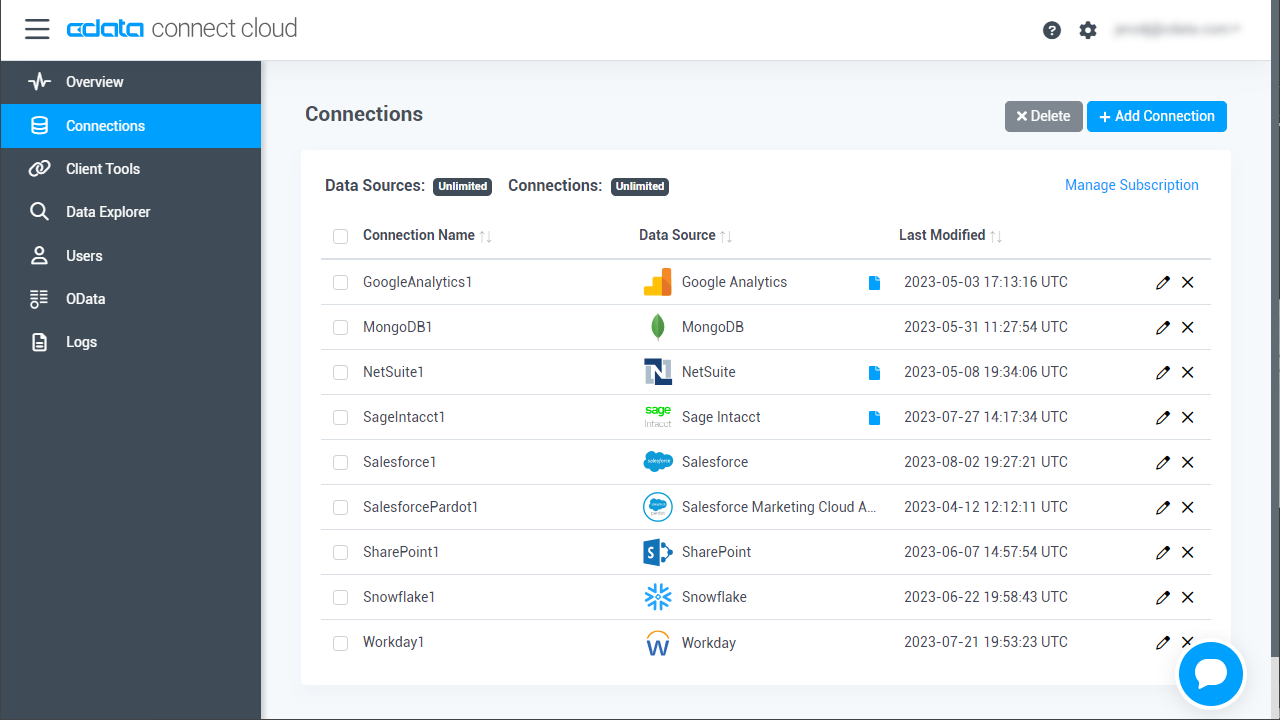
- Select "Workday" from the Add Connection panel.
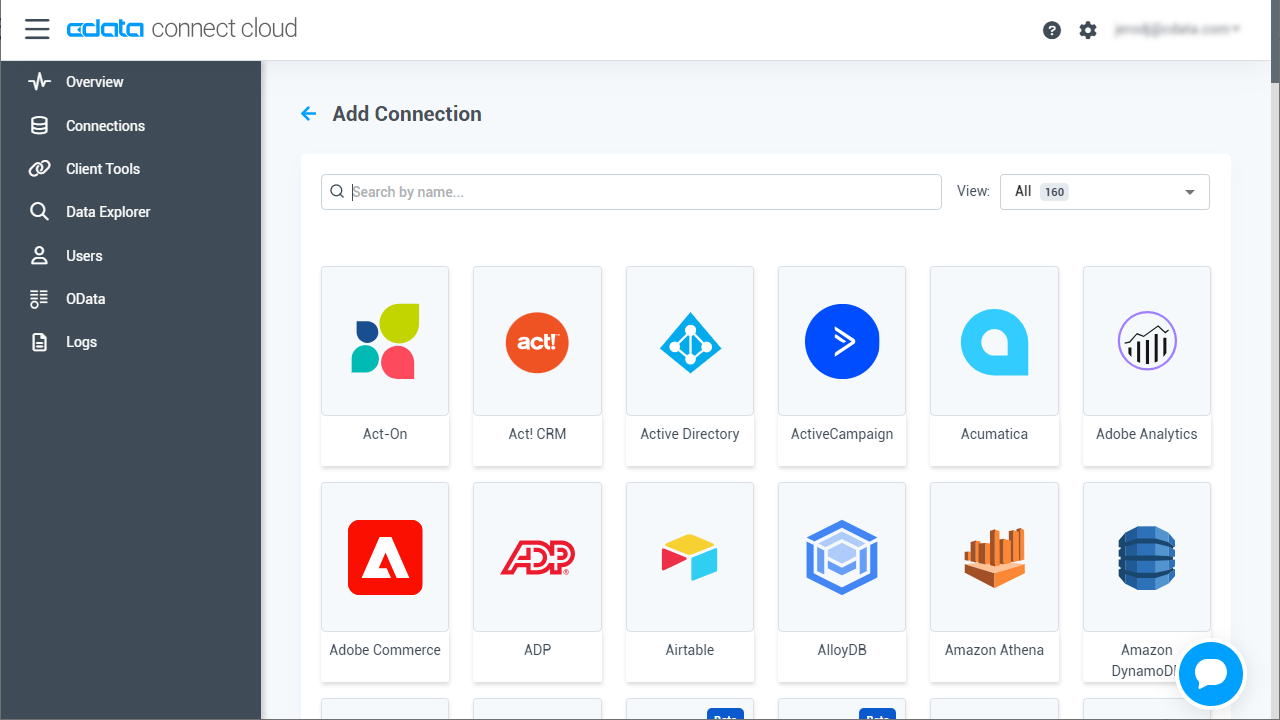
-
Enter the necessary authentication properties to connect to Workday.
To connect to Workday, users need to find the Tenant and BaseURL and then select their API type.
Obtaining the BaseURL and Tenant
To obtain the BaseURL and Tenant properties, log into Workday and search for "View API Clients." On this screen, you'll find the Workday REST API Endpoint, a URL that includes both the BaseURL and Tenant.
The format of the REST API Endpoint is: https://domain.com/subdirectories/mycompany, where:
- https://domain.com/subdirectories/ is the BaseURL.
- mycompany (the portion of the url after the very last slash) is the Tenant.
Using ConnectionType to Select the API
The value you use for the ConnectionType property determines which Workday API you use. See our Community Article for more information on Workday connectivity options and best practices.
API ConnectionType Value WQL WQL Reports as a Service Reports REST REST SOAP SOAP
Authentication
Your method of authentication depends on which API you are using.
- WQL, Reports as a Service, REST: Use OAuth authentication.
- SOAP: Use Basic or OAuth authentication.
See the Help documentation for more information on configuring OAuth with Workday.
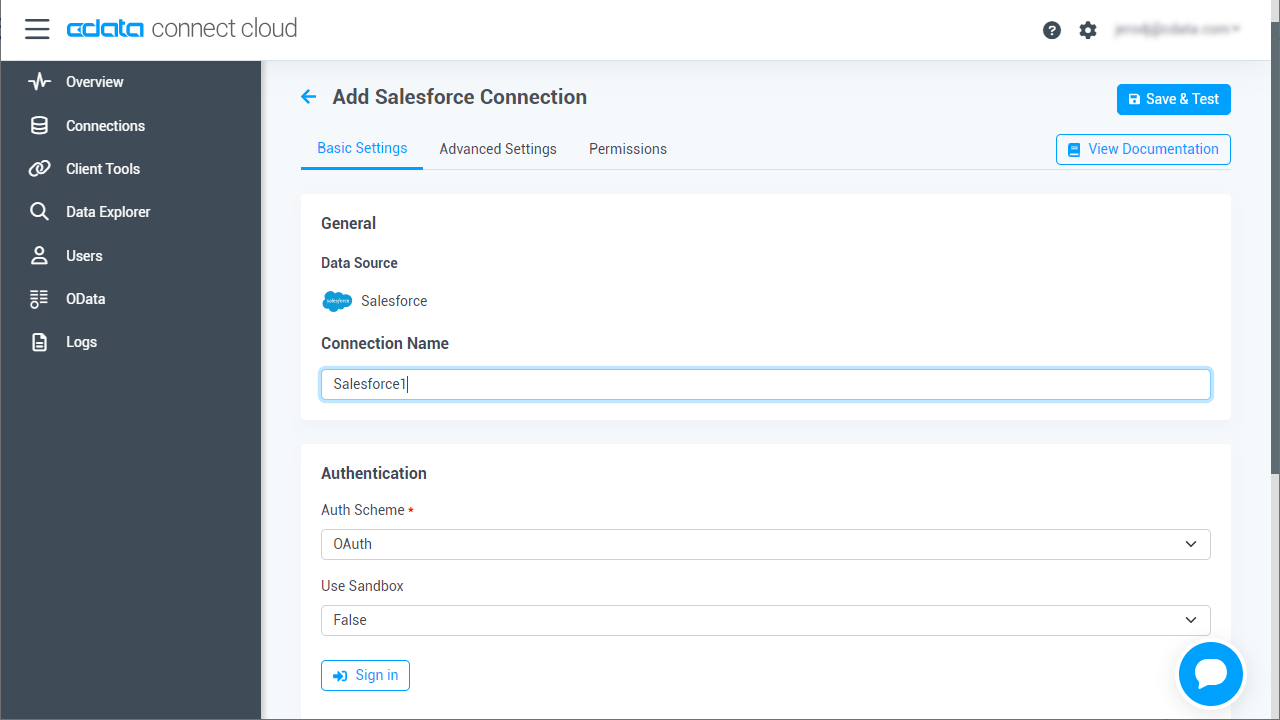
- Click Create & Test.
- Navigate to the Permissions tab in the Add Workday Connection page and update the User-based permissions
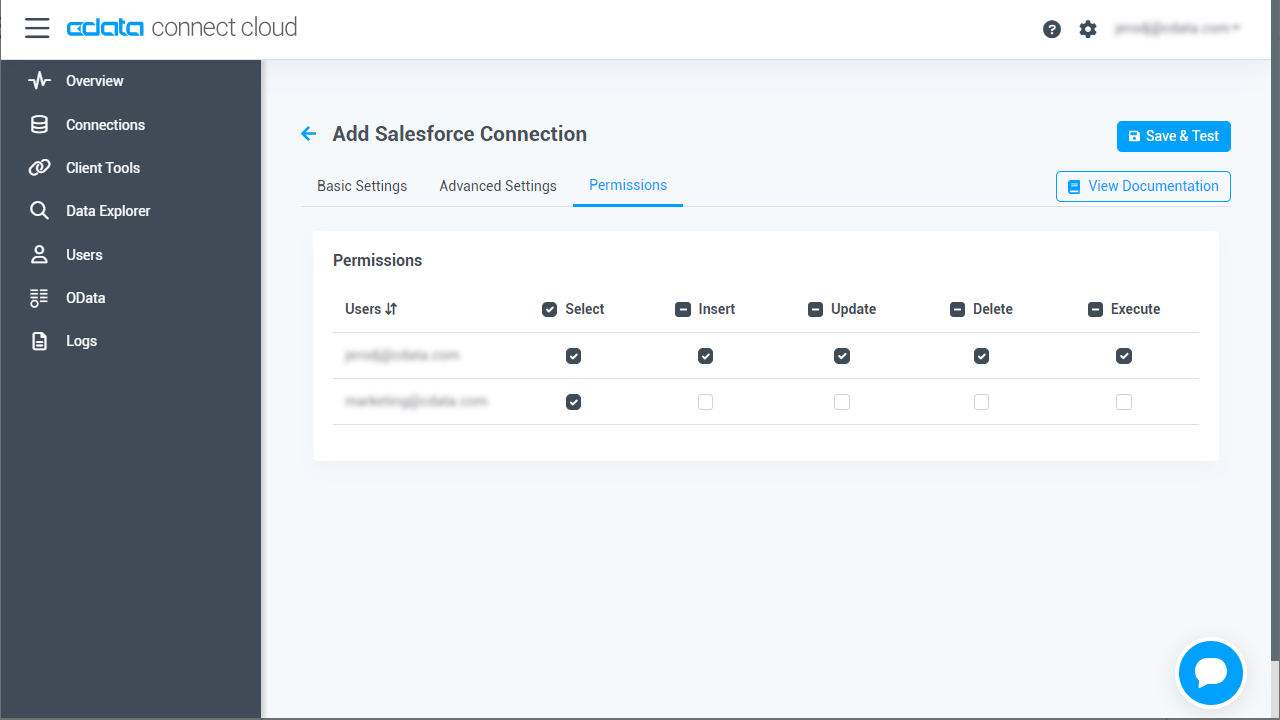
Add a Personal Access Token
If you are connecting from a service, application, platform, or framework that does not support OAuth authentication, you can create a Personal Access Token (PAT) to use for authentication. Best practices would dictate that you create a separate PAT for each service, to maintain granularity of access.
- Click on your username at the top right of the Connect Cloud app and click User Profile
- On the User Profile page, scroll down to the Personal Access Tokens section and click Create PAT
- Give your PAT a name and click Create
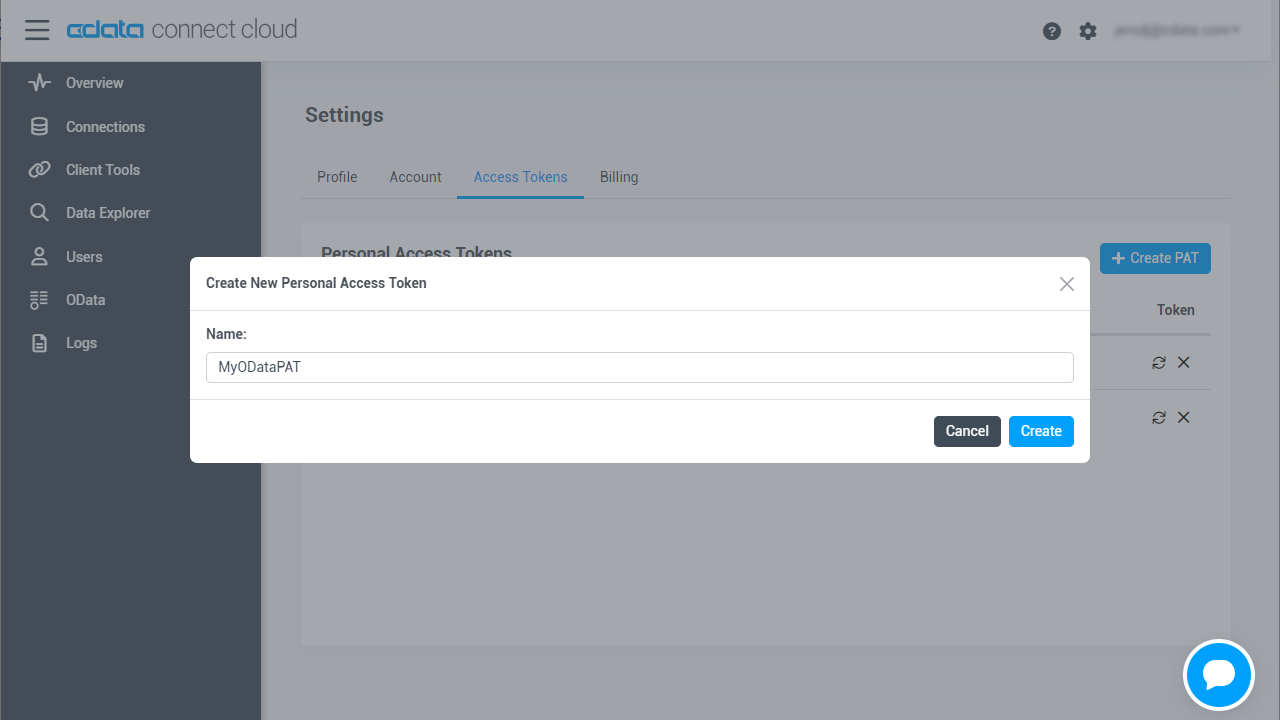
- The personal access token is only visible at creation, so be sure to copy it and store it securely for future use
With the connection configured, you are ready to connect to Workday data from Databricks.
Connecting live Workday data in Databricks
Follow these steps to establish a connection from Databricks to the CData Connect Cloud Virtual SQL Server API.
- Log into Databricks.
- Navigate to SQL Warehouses and start any warehouse of your choice.
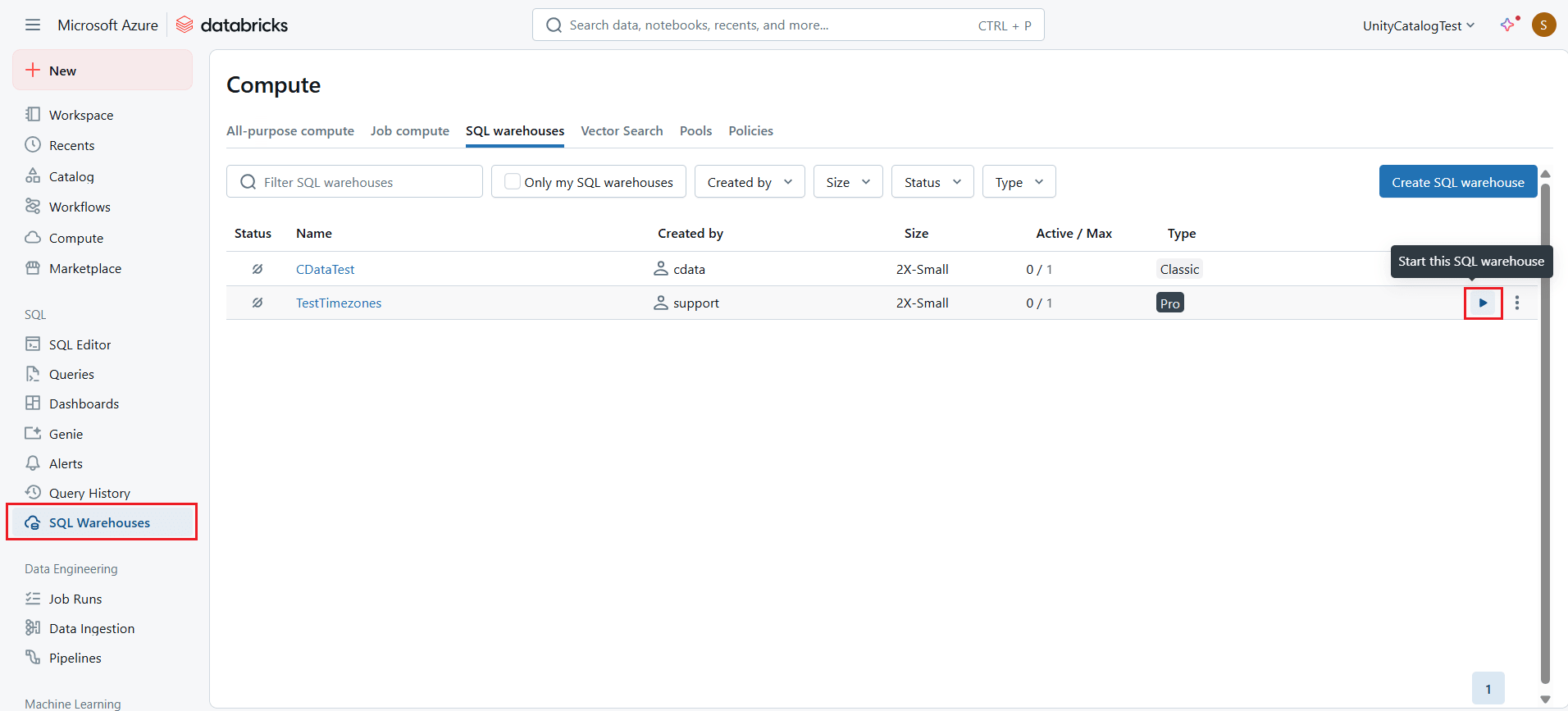
- In the navigation pane, select Catalog. Click and select Create a connection.
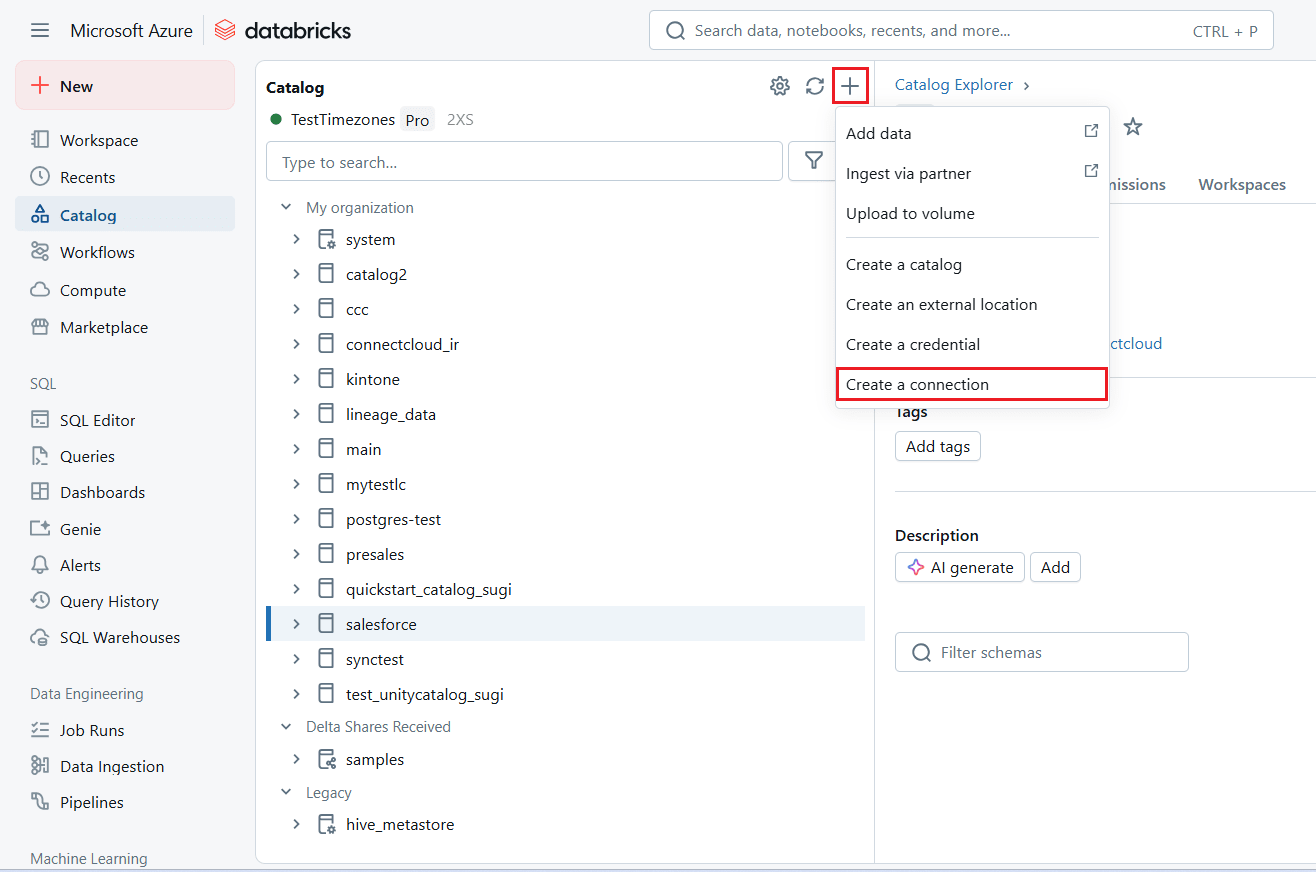
- In the Connection basics section (or Step 1 of Set up connection page), enter the following connection details and click Next:
- Connection name: a user-defined connection name.
- Connection type: select SQL Server from the drop-down list.
- Auth type: select Username and password.
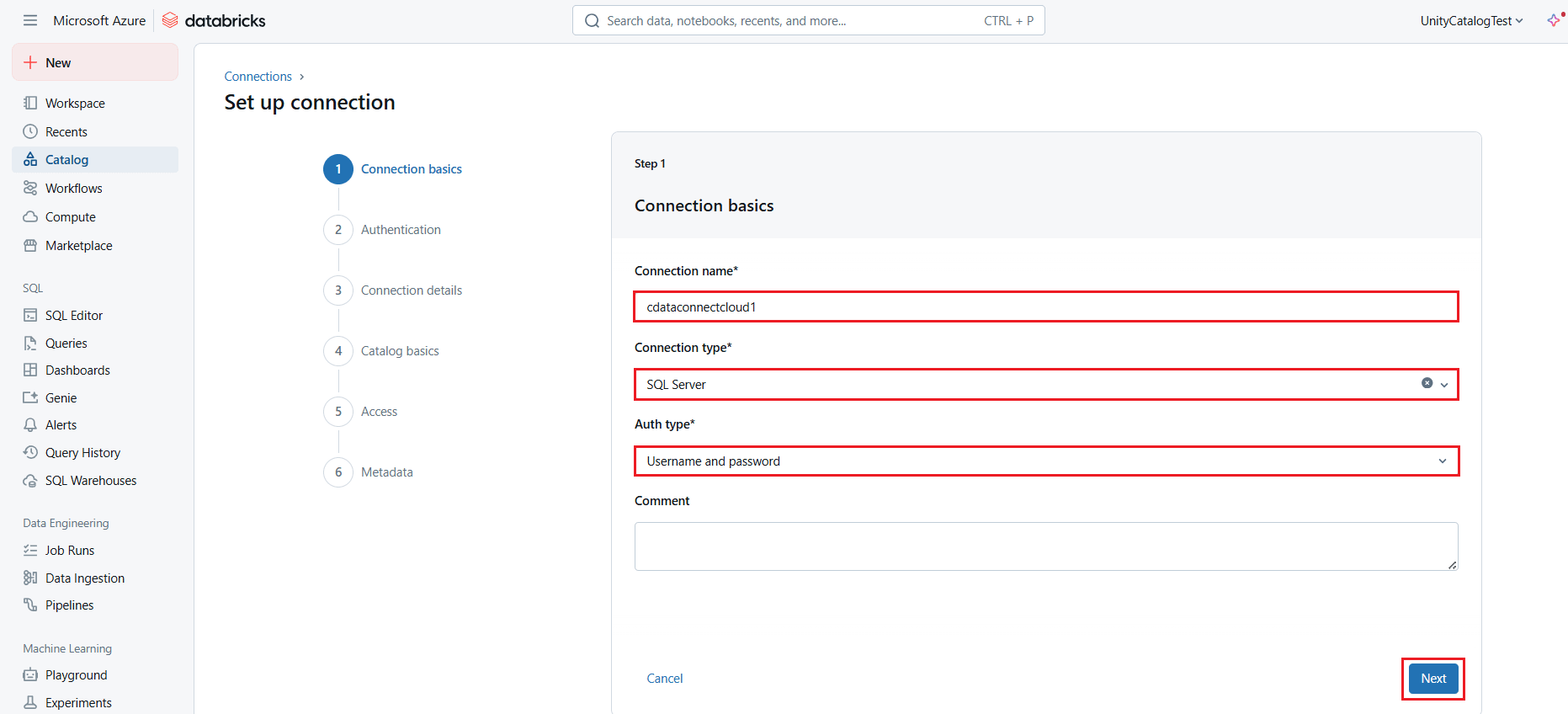
- In the Authentication section (or Step 2), enter the required authentication details, and click Next:
- Host: tds.cdata.com
- Port: 14333
- User: enter your CData Connect Cloud username, displayed in the top-right corner of the CData Connect Cloud interface. For example, test@cdata.com
- Password: enter the PAT generated and copied in the previous section.
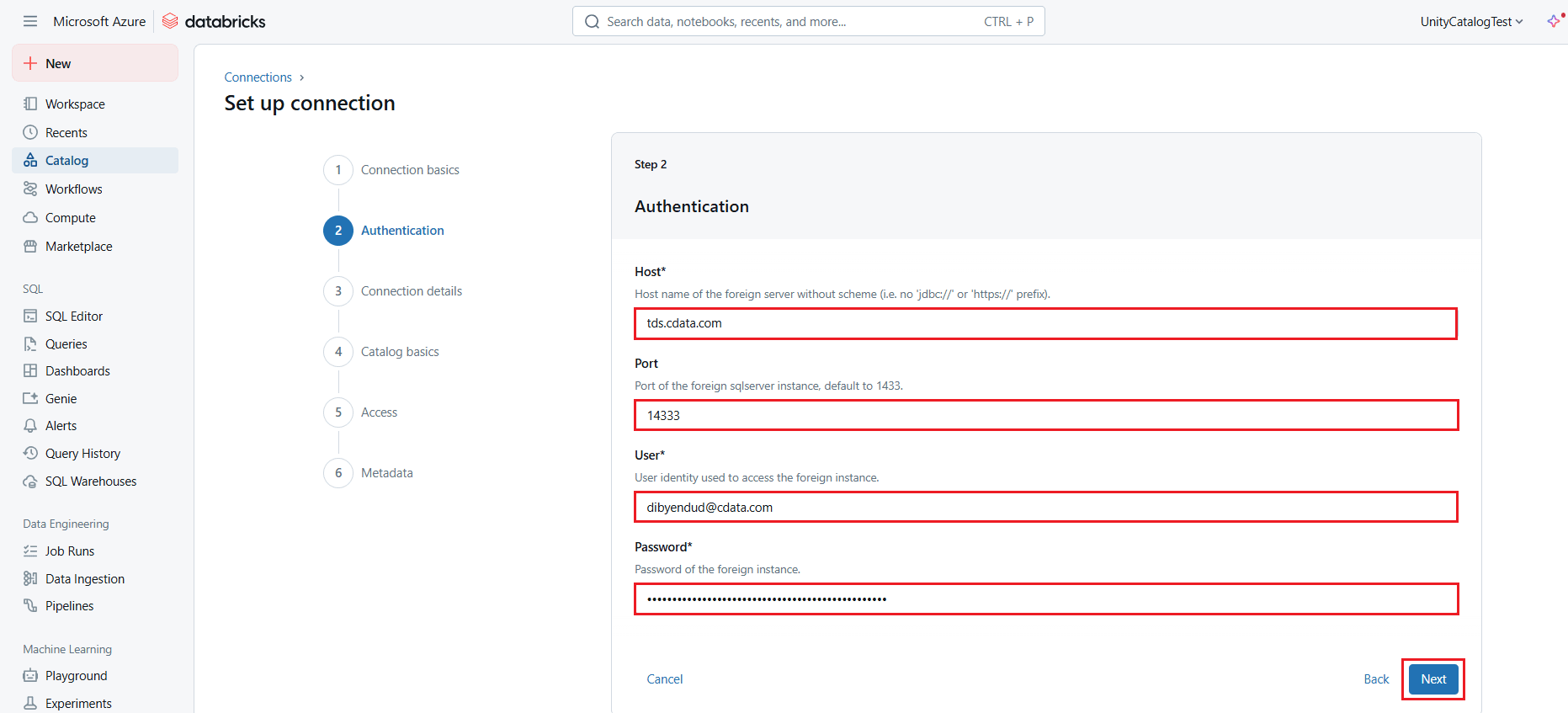
- In the Connection details section (or Step 3), enable the Trust server certificate checkbox and select the appropriate Application intent. Click Create Connection.
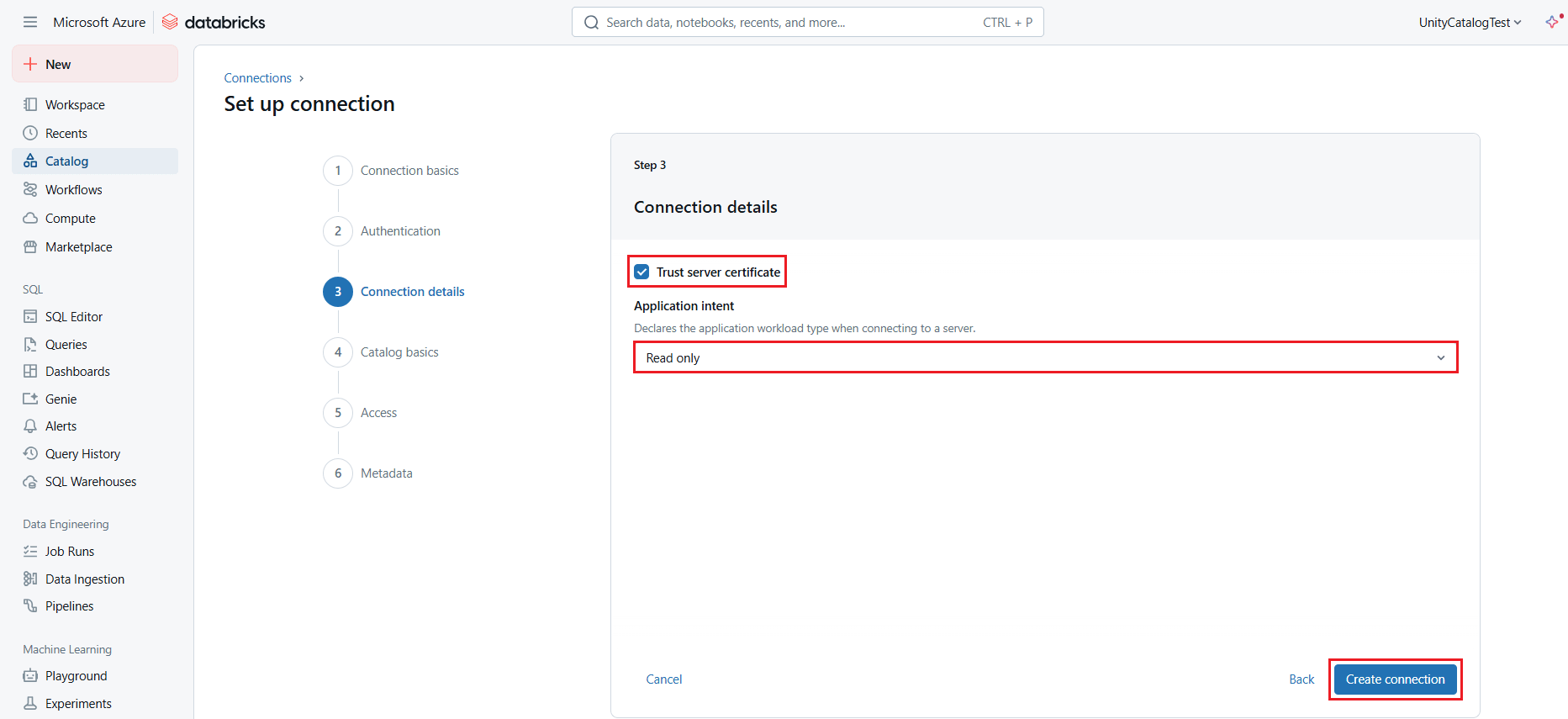
- In the Catalog basics section (or Step 4), enter the required details and click Create catalog:
- Catalog name: enter a name of your choice
- Connection: this will be the Databricks connection you defined earlier
- Database: enter your Workday connection name (for example, Workday1)
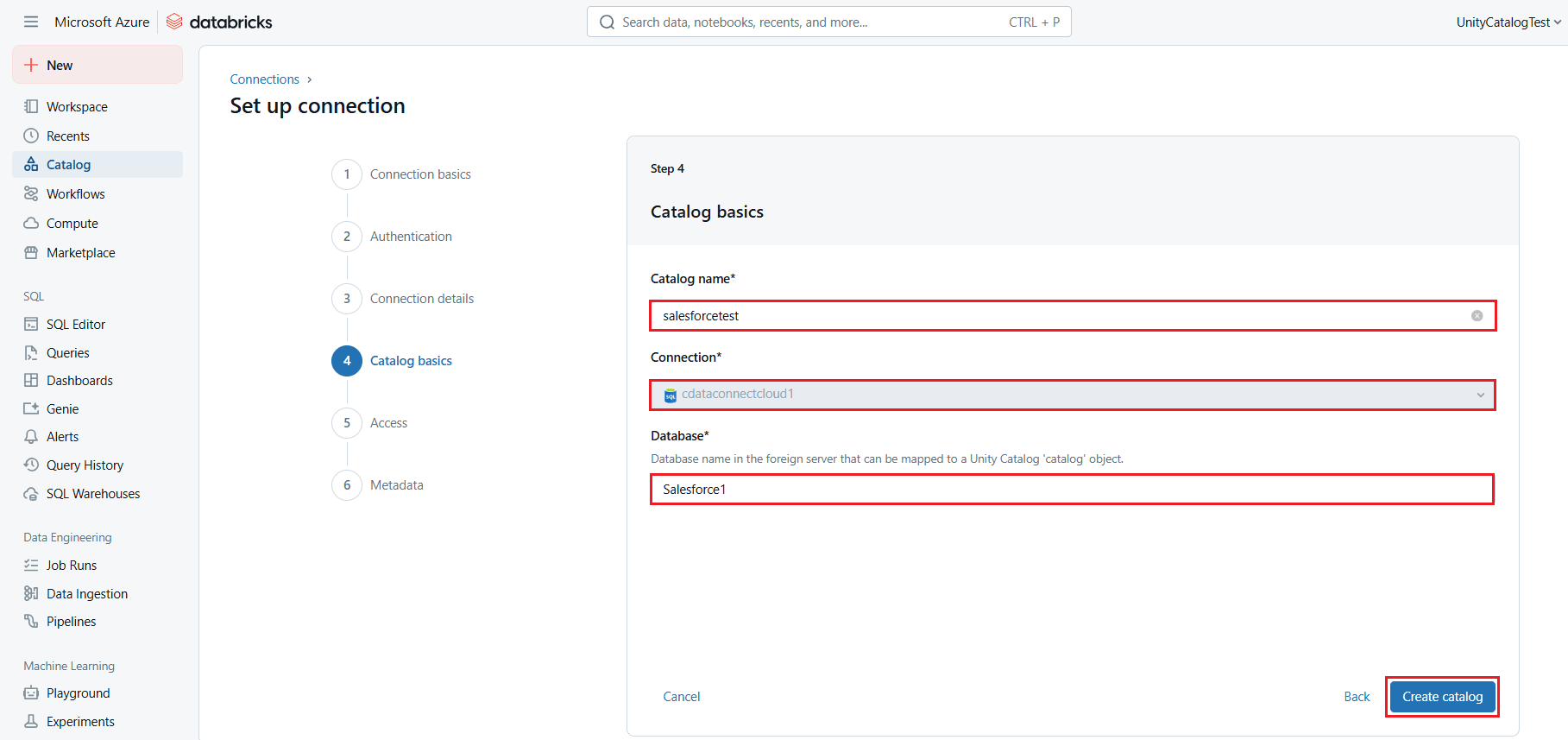
- In the Access section (or Step 5), assign the Workspace, User access rights, and Grant read or edit privileges to the catalog.
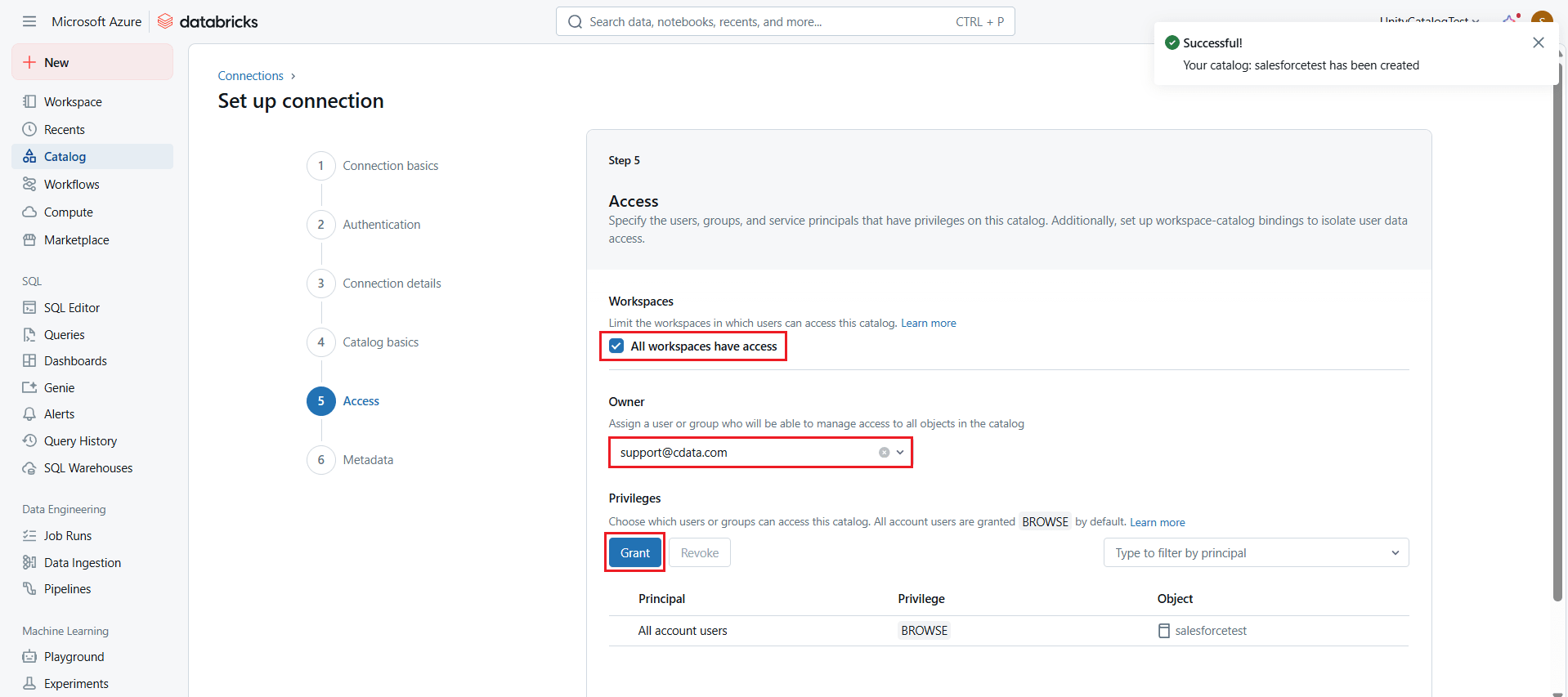
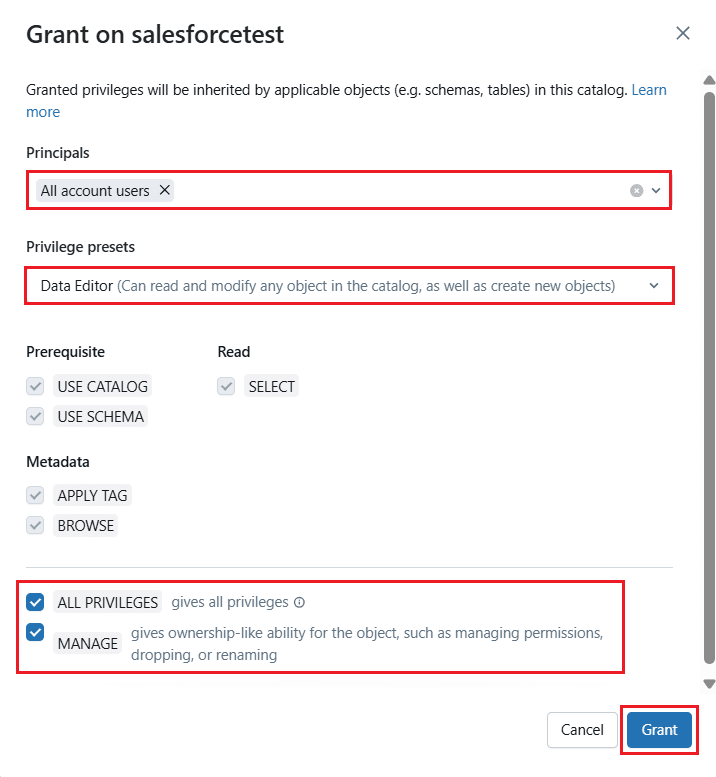
- Click Next > Save to save all the details for the catalog.
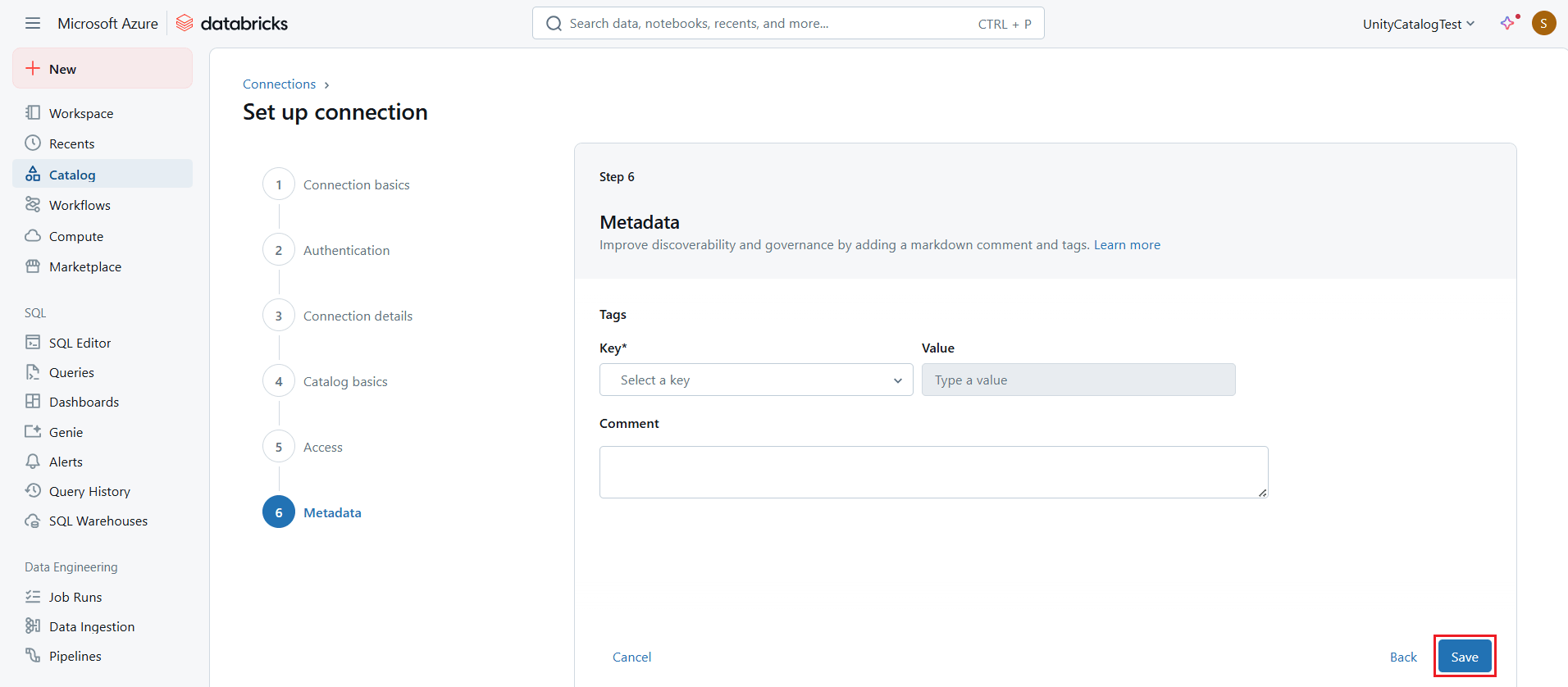
Access the catalog and visualize live Workday data in Databricks
To access the newly created catalog and create a dashboard to visualize live Workday data in Databricks, follow these steps:
- Select the catalog and expand it. A list of tables from Workday will appear on the screen.
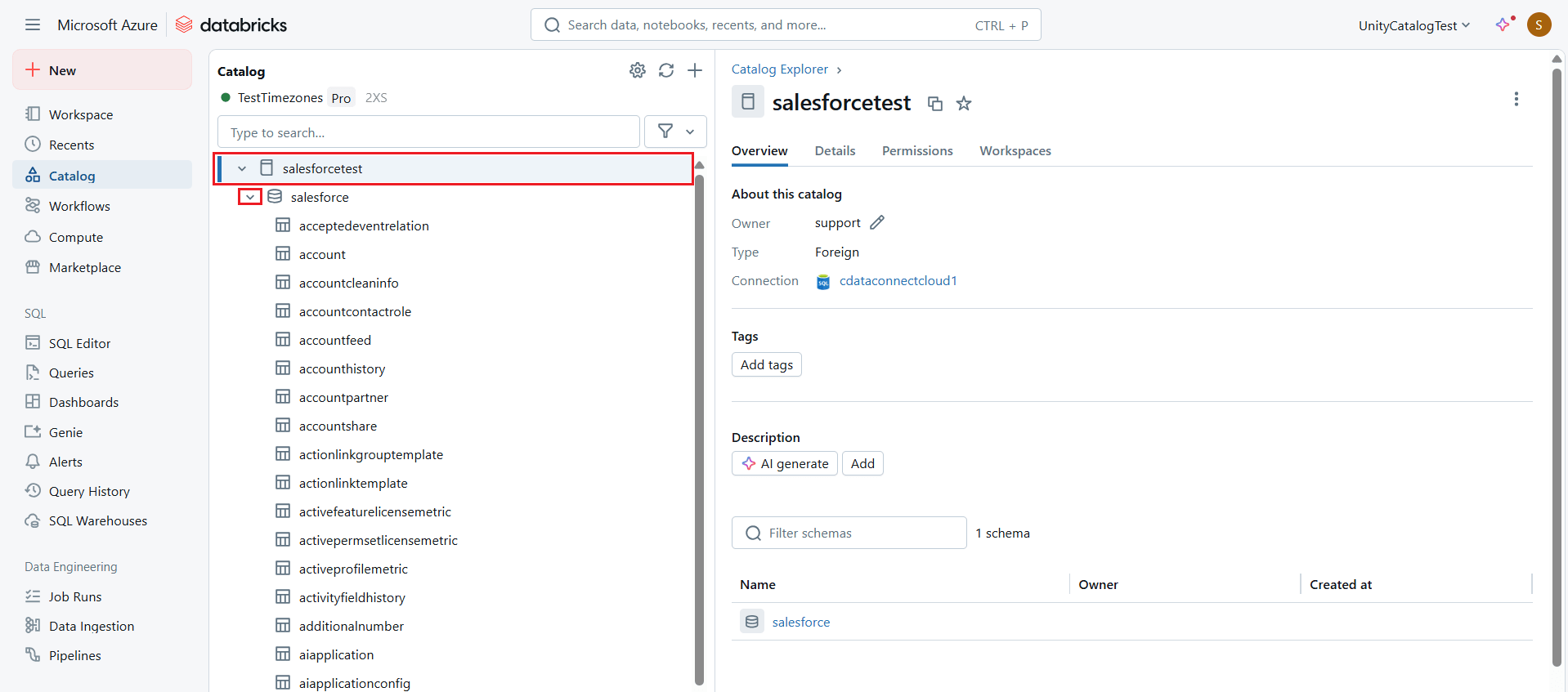
- Choose the desired table and click the Overview tab to view the table metadata.
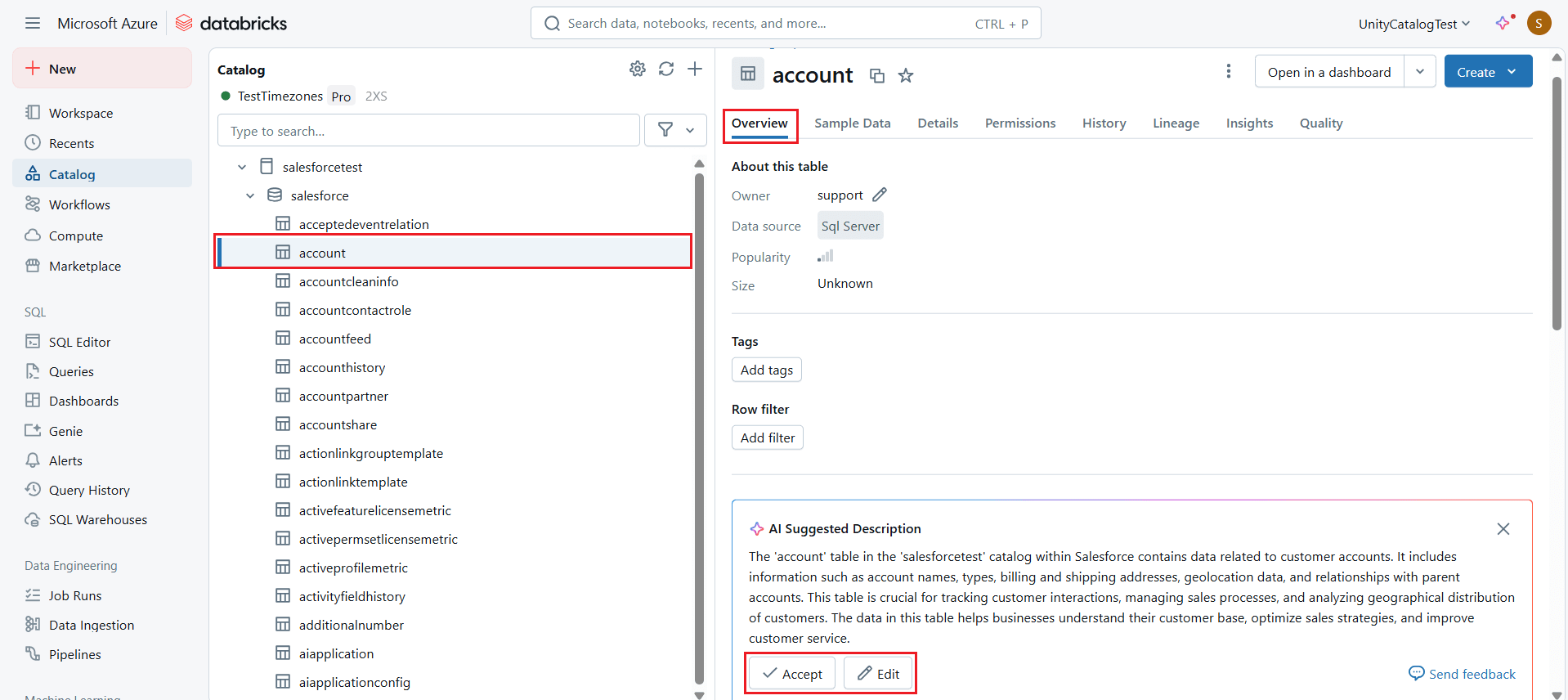

- Click the Sample Data tab to view real-time data in the table.
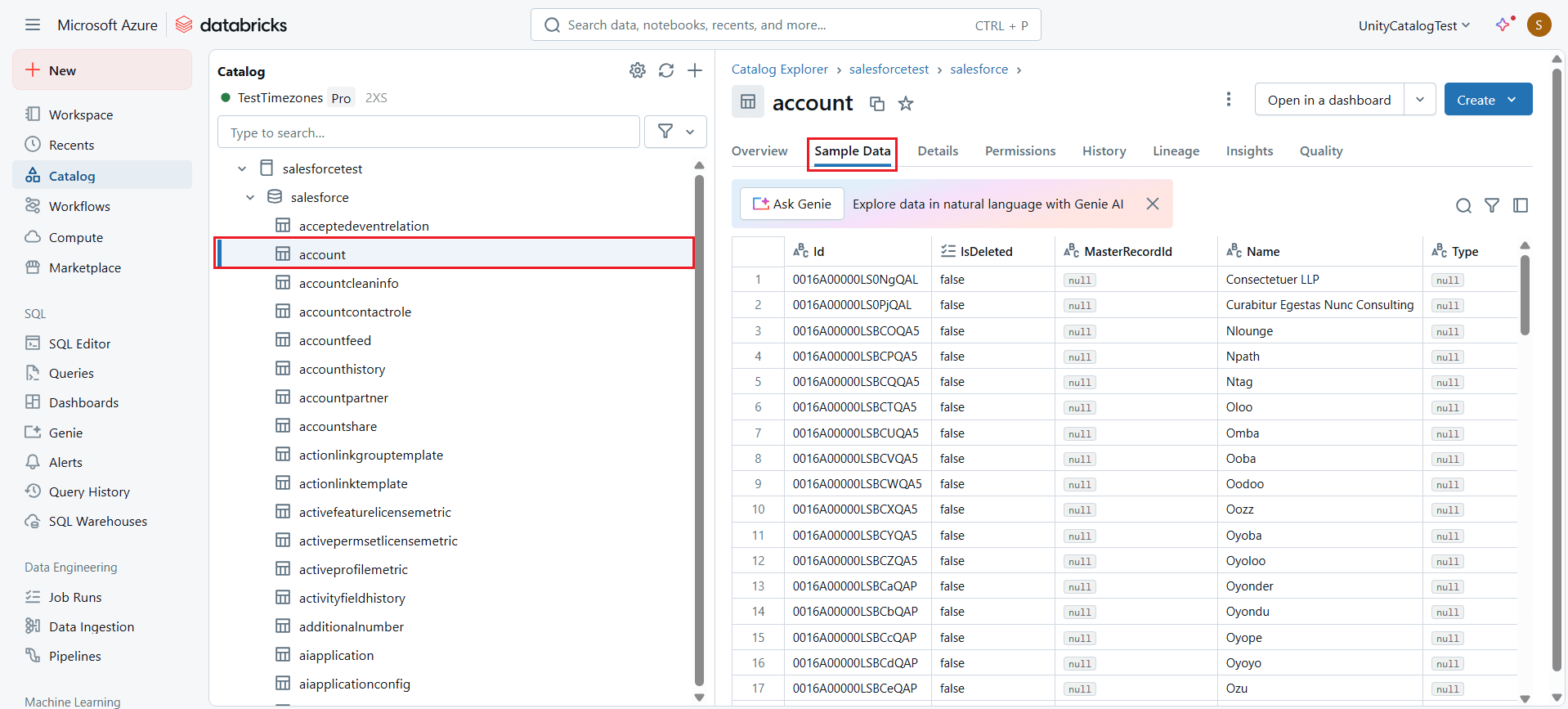
- Now, click Create at the top right corner and select Dashboard.

- Manually create a visualization by selecting at least one field in the visualization editor from the widget, or choose one of the visualization options suggested by Databricks AI.
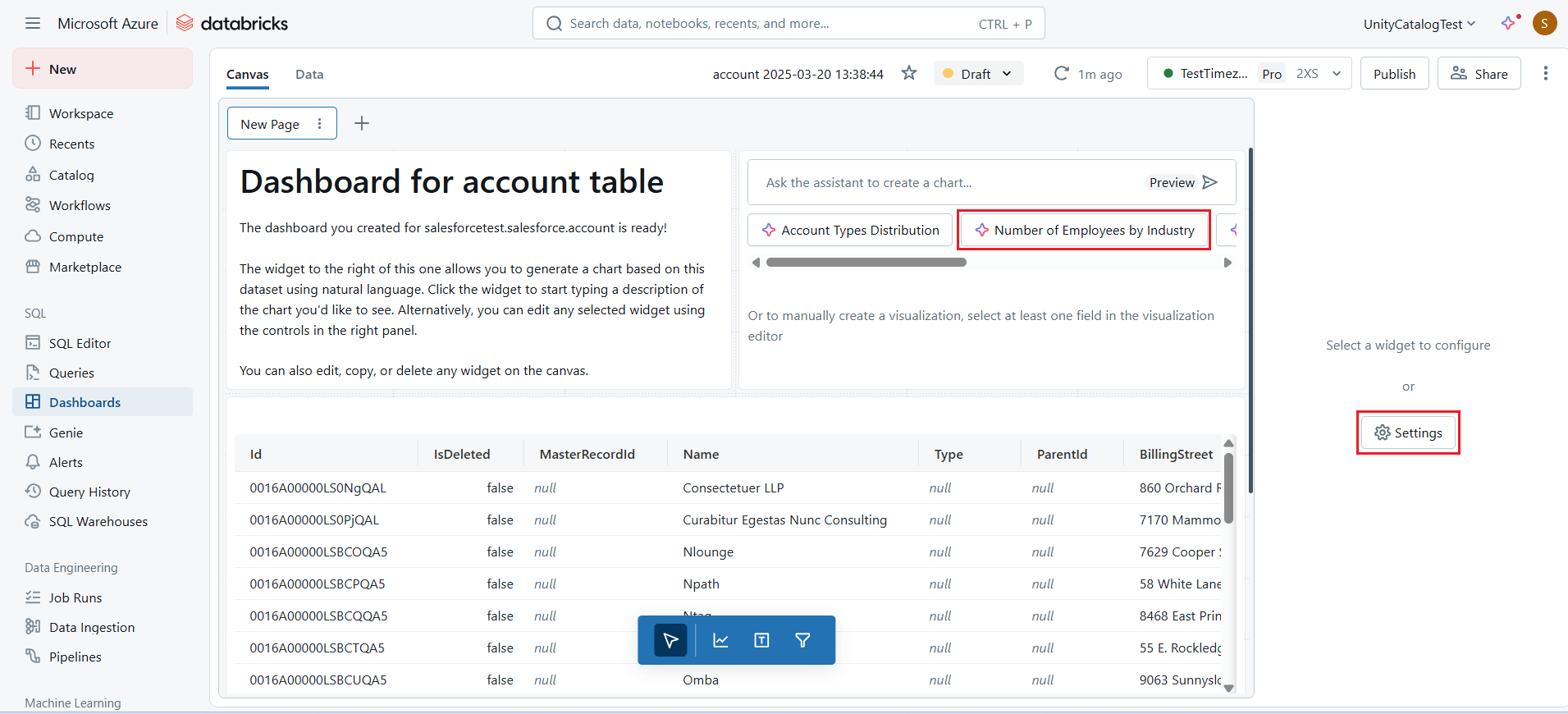
- Once the visualization is created, edit the details in the widget settings of the dashboard.
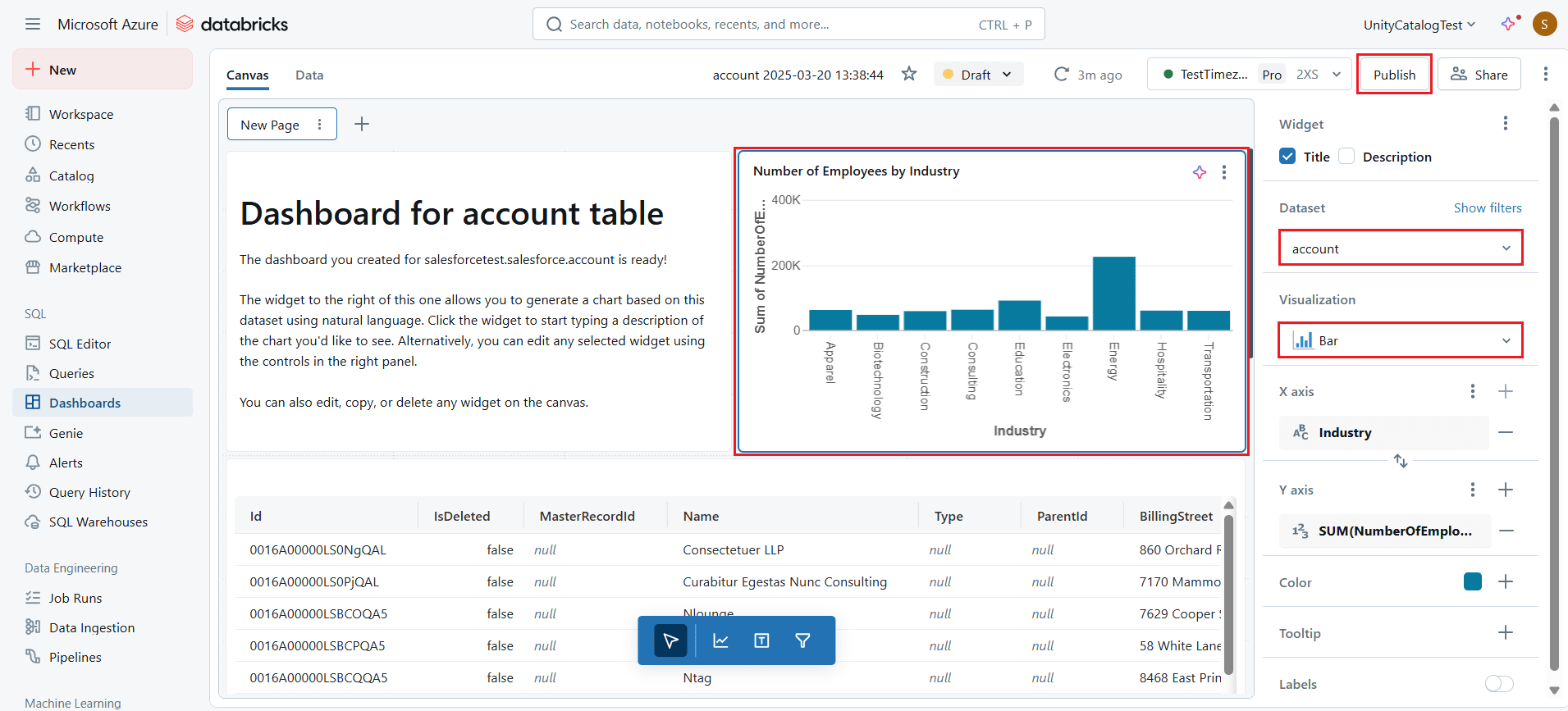
- Click Publish to publish the dashboard report.
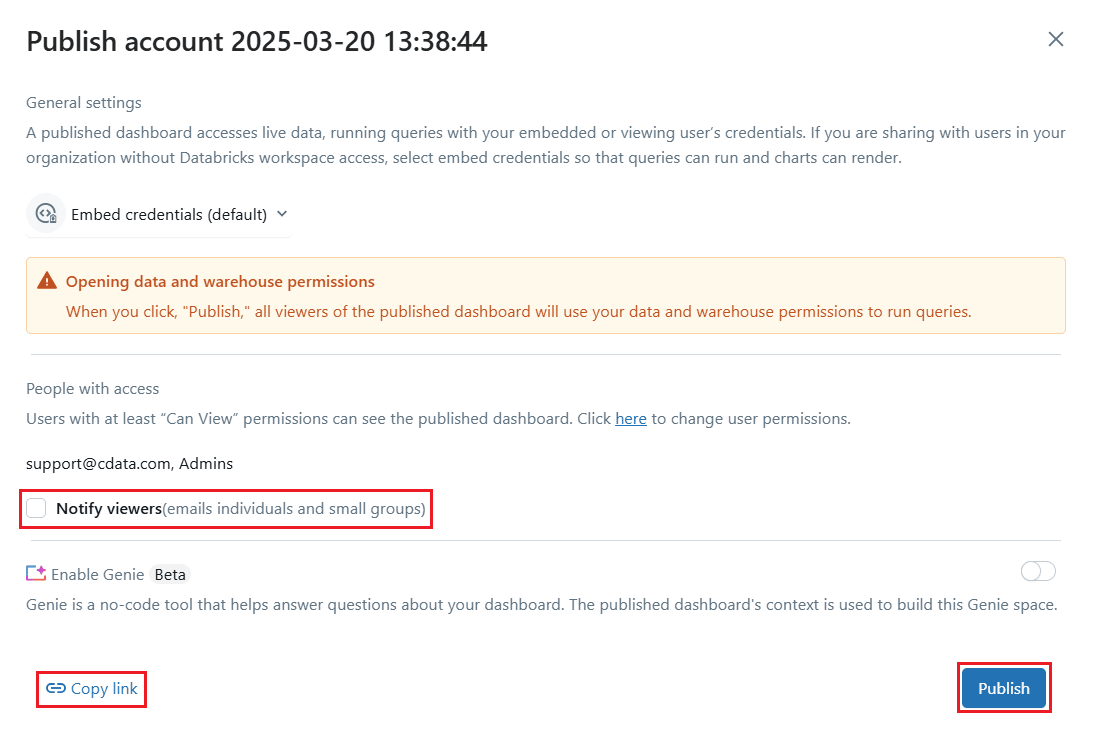
Live access to Workday data from cloud applications
At this stage, you have established a direct, cloud-to-cloud connection to live Workday data in Databricks. This enables you to create dashboards to monitor and visualize your data seamlessly.
For more details on accessing live data from over 100 SaaS, Big Data, and NoSQL sources through cloud applications like Databricks, visit our Connect Cloud page. As always, let us know if you have any questions during your evaluation. Our world-class CData Support Team is always available to help!

